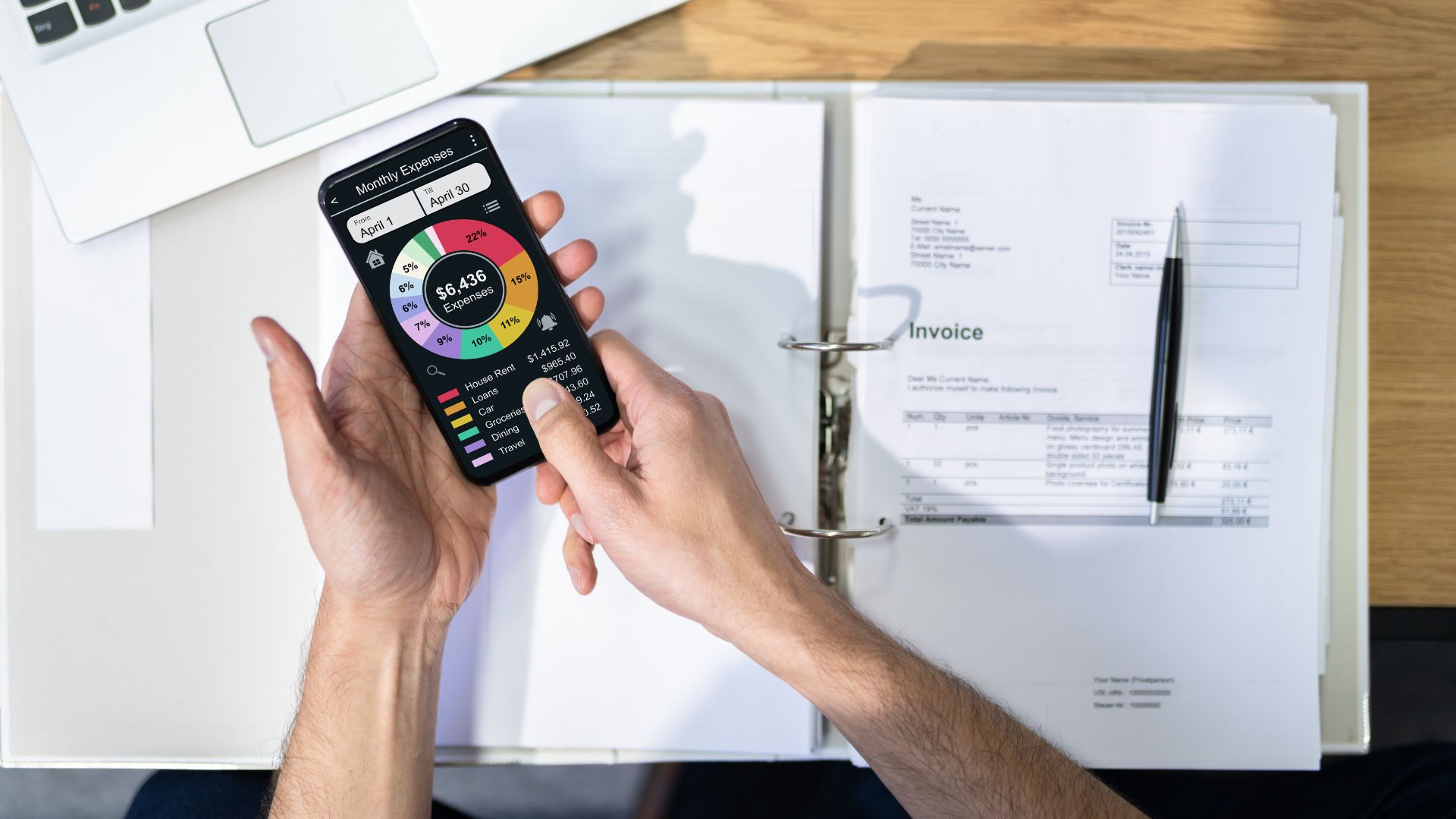Top 5 Personal Finance Apps for Money Management
Handling your money well is crucial for maintaining financial stability and achieving your long-term goals. In today’s digital world, personal finance apps have become indispensable tools for budgeting, tracking expenses, and managing investments. With a plethora of options available, selecting the right app for your financial needs can be daunting. This guide provides an in-depth look at the top five personal finance apps, exploring their features, benefits, and drawbacks to help you make an informed decision.
1. Mint: The All-in-One Financial Management Solution
Mint, developed by Intuit, is one of the most well-known and widely used personal finance apps. Its comprehensive suite of features makes it a versatile tool for personal finance management. It handles budgeting, expense tracking, and credit score monitoring.
Key Features:
- Expense Tracking and Categorization: Mint automatically imports and categorizes transactions from your bank accounts, credit cards, and other financial institutions. This feature provides a clear view of your spending patterns and helps you identify areas where you can cut costs.
- Budget Creation and Management: The app allows you to set up budgets for different categories, such as groceries, dining out, and entertainment. Mint provides alerts when you approach or exceed your budget limits, helping you stay on track.
- Bill Tracking: Mint helps you manage and track upcoming bills by sending reminders for due dates. This feature makes sure you never miss a payment, so you can avoid late fees and protect your credit score.
- Credit Score Monitoring: The app provides access to your credit score and offers insights into factors affecting it. Mint also provides tips and resources for improving your credit score.
Pros:
- User-Friendly Interface: Mint’s intuitive design and easy-to-navigate interface make it accessible for users of all experience levels.
- Free to Use: The core features of Mint are available at no cost, with optional in-app purchases for premium features and services.
- Comprehensive Overview: Mint offers a holistic view of your financial situation, combining budgeting, expense tracking, and credit monitoring in one place.
Cons:
- Ads and Product Recommendations: Free users may encounter ads and suggestions for financial products, which some users find intrusive.
- Limited Investment Tracking: While Mint offers basic investment tracking, it may not provide the depth of analysis found in more specialized investment apps.
Mint is ideal for individuals seeking a comprehensive, user-friendly app that covers all aspects of personal finance apps management. Its extensive features and free access make it a popular choice for many users.
2. YNAB (You Need A Budget): Proactive Budgeting for Financial Control
YNAB, which stands for “You Need A Budget,” focuses on taking an active role in managing your budget. The app is designed to help users allocate every dollar of their income to specific categories, emphasizing the importance of planning and intentional spending.
Key Features:
- Zero-Based Budgeting: YNAB’s zero-based budgeting method requires users to assign every dollar a specific job, whether it’s for bills, savings, or discretionary spending. This approach helps users prioritize their expenses and avoid overspending.
- Goal Setting and Tracking: The app allows you to set financial goals, such as saving for a vacation or paying off debt. YNAB tracks your progress toward these goals and adjusts your budget accordingly.
- Real-Time Sync: YNAB syncs with your bank accounts in real-time, providing an up-to-date view of your finances and ensuring that your budget reflects your current financial situation.
- Educational Resources: YNAB offers a range of educational resources, including budgeting workshops and online courses. These resources help users understand and implement effective budgeting strategies.
Pros:
- Strong Community Support: YNAB has a dedicated community of users who share tips, advice, and support. The app’s customer support team is also highly responsive and knowledgeable.
- Focus on Financial Education: YNAB’s emphasis on financial education helps users develop better budgeting habits and achieve their financial goals.
- Comprehensive Budgeting Tools: The app provide a range of tools and features to help users manage their finances effectively.
Cons:
- Subscription Cost: YNAB requires a subscription fee, which may be a consideration for users who are looking for free budgeting tools.
- Steep Learning Curve: The app’s detailed features and zero-based budgeting approach may require some time and effort to master.
YNAB is perfect for those who want to actively manage their budget and are willing to invest in additional financial tools. Its emphasis on financial education and goal setting makes it a valuable resource for users seeking greater control over their finances.
3. PocketGuard: Simplified Budgeting for Easy Expense Management
PocketGuard is made for people who like a simpler way to handle their budget. The app focuses on providing a clear view of how much disposable income you have after accounting for bills, goals, and necessities.
Key Features:
- In My Pocket Feature: PocketGuard’s “In My Pocket” feature shows your available money for discretionary spending after accounting for bills, savings, and obligations.
- Expense Tracking and Categorization: The app tracks and categorizes your spending, helping you see where your money goes and find potential savings.
- Bill Negotiation: PocketGuard offers a feature to help negotiate lower bills, such as cable and internet services. This can lead to substantial savings in the long run.
- Automatic Categorization: PocketGuard automatically categorizes transactions, reducing the need for manual data entry and making budgeting more convenient.
Pros:
- Simplicity: PocketGuard’s user-friendly interface and straightforward features make it easy to use, even for individuals with limited financial experience.
- Focus on Disposable Income: The app’s emphasis on showing available disposable income helps users make informed spending decisions.
- Automatic Bill Negotiation: The app’s bill negotiation feature can help users save money on recurring expenses.
Cons:
- Limited Customization: PocketGuard’s limited customization options might be a drawback for users with more specific budgeting needs.
- Limited Investment Tracking: The app does not provide comprehensive investment tracking or financial planning tools.
PocketGuard is ideal for users who want a simple, easy-to-use app for managing their finances and focusing on their disposable income. Its straightforward approach and bill negotiation feature make it a practical choice for those looking to streamline their budgeting process.
4. GoodBudget: Envelope Budgeting for Digital Cash Management
GoodBudget is a digital envelope budgeting app that helps users allocate funds into virtual envelopes for various spending categories. This traditional budgeting method allows users to control their spending by setting aside specific amounts for different purposes.
Key Features:
Envelope Budgeting System: GoodBudget’s envelope budgeting system lets users create virtual envelopes for categories like groceries, entertainment, and savings. This method helps manage spending and stay within budget.
Sync Across Devices: The app syncs your budget across multiple devices, making it easy to manage finances with family members or partners.
Savings Goals: GoodBudget allows users to set and track savings goals, offering motivation and helping them stay focused on their financial objectives.
Debt Tracking: The app features tools for managing debt payments, ensuring users stay on top of their financial obligations.
Pros:
- Customizable Envelopes: Users can create and customize envelopes to fit their unique budgeting needs, providing flexibility and control over their finances.
- Debt Management: The app’s debt tracking features help users manage and pay down debt effectively.
- Cross-Device Syncing: GoodBudget’s synchronization across devices makes it convenient for multiple users to manage a shared budget.
Cons:
- Manual Entry Required: Users may need to manually enter transactions, which can be time-consuming compared to apps with automatic syncing features.
- Limited Investment Tracking: GoodBudget does not offer investment tracking or comprehensive financial planning tools.
GoodBudget is ideal for individuals who prefer the traditional envelope budgeting method and want a mobile app to manage their finances. Its customizable envelopes and debt tracking features make it a valuable tool for users seeking a structured approach to budgeting.
5. Personal Capital: Investment Tracking and Retirement Planning
Personal Capital combines budgeting with investment tracking and retirement planning, offering a comprehensive view of your financial health. The app is designed for users who want to manage their finances, investments, and retirement savings in one place.
Key Features:
- Investment Tracking: Personal Capital provides detailed insights into your investment performance, including asset allocation, portfolio growth, and investment fees. This feature helps users make smart choices about their investments.
- Retirement Planning: The app features retirement planning tools, including a retirement calculator and projections based on your current financial situation. Personal Capital helps you assess whether you are on track to meet your retirement goals.
- Expense Tracking: In addition to investment and retirement tools, Personal Capital offers budgeting features. These tools help track and categorize expenses, giving you a comprehensive view of your finances.
- Free Financial Dashboard: Personal Capital’s financial dashboard is available for free. It provides users with a robust tool for managing their finances without any subscription fee.
Pros:
- Comprehensive Financial Overview: The app provides a complete view of your finances, including investments, retirement accounts, and expenses.
- Free Access to Financial Dashboard: Personal Capital offers a robust financial dashboard at no cost, making it accessible to a broad range of users.
- Detailed Investment Analysis: The app’s investment tracking features offer in-depth analysis and insights into your portfolio.
Cons:
- Complexity: The app’s extensive features and detailed financial analysis may be overwhelming for users who only need basic budgeting tools.
- Premium Advisory Services: While the financial dashboard is free, Personal Capital also offers premium advisory services for an additional fee.
Personal Capital is best suited for individuals who want to integrate budgeting with investment tracking and retirement planning. Its comprehensive features and detailed analysis make it a valuable tool for users seeking a holistic view of their financial health.
Conclusion
Choosing the right personal finance app depends on your specific needs and preferences. Each of the top five apps—Mint, YNAB, PocketGuard, GoodBudget, and Personal Capital—offers unique features and benefits that cater to different aspects of financial management.
- Mint is ideal for users seeking an all-in-one financial management solution with comprehensive budgeting, expense tracking, and credit monitoring features.
- YNAB is perfect for those who want a proactive budgeting approach and are willing to invest in a subscription for advanced financial management tools.
- PocketGuard suits users who prefer a simplified view of their disposable income and want an easy-to-use app for budgeting and expense management.
- GoodBudget is best for individuals who favor traditional envelope budgeting and need a mobile app for managing their finances and setting savings goals.
- Personal Capital is designed for users who want to combine budgeting with investment tracking and retirement planning, offering a comprehensive view of their financial health.
By exploring personal finance apps and understanding their features, you can choose the one that best fits your financial management style and goals. Investing time in finding the right tool can enhance your financial control, improve decision-making, and help you make progress toward your financial objectives.




